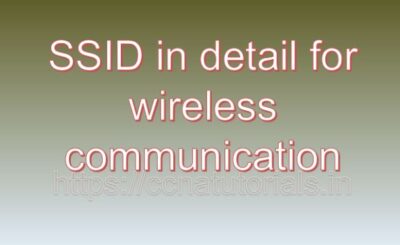Contents of this article
In this article I describe Various interfaces used in networking for ccna. I can give you an overview of Various interfaces used in networking for ccna, along with examples.
In networking, an interface is a point of interaction between a device and a network. It enables communication between devices by providing physical or logical connections to transmit and receive data. There are various types of interfaces used in networking, each serving specific purposes and functionalities. Let’s explore some of the common types of interfaces in detail:
Physical Interfaces:
Physical interfaces refer to the physical connectors or ports on networking devices used to connect cables and establish physical connections with other devices. These interfaces define the physical characteristics of the connection, including the type of connector, cable medium, and transmission speed. Common types of physical interfaces include:
Ethernet Interface:
Ethernet interfaces are used to connect devices to Ethernet networks using twisted-pair copper cables or fiber-optic cables. Ethernet interfaces typically use RJ-45 connectors for copper cables and SC, LC, or ST connectors for fiber-optic cables. Examples include Ethernet ports on switches, routers, and network interface cards (NICs) in computers.
Serial Interface:
Serial interfaces are used for serial communication between networking devices over serial transmission lines. Serial interfaces transmit data one bit at a time sequentially over a single communication channel. Examples include serial ports (RS-232, RS-485) on routers, switches, and modems for connecting to serial devices such as console terminals or serial printers.
USB Interface:
USB (Universal Serial Bus) interfaces are used to connect peripheral devices such as printers, scanners, storage devices, and network adapters to computers and other host devices. USB interfaces support high-speed data transfer and provide power to connected devices. Examples include USB ports on computers, routers, and network switches for connecting USB devices.
Logical Interfaces:
Logical interfaces are virtual interfaces created within networking devices to represent specific network configurations, protocols, or functions. These interfaces provide logical connectivity and functionality independent of physical interfaces. Common types of logical interfaces include:
Virtual LAN (VLAN) Interface:
VLAN interfaces are virtual interfaces that represent specific VLAN configurations on switches and routers. VLAN interfaces allow devices within the same VLAN to communicate with each other while segregating traffic from other VLANs. Examples include VLAN interfaces configured on switches to segment network traffic and enforce network security policies.
Loopback Interface:
A loopback interface is a virtual interface that represents the device itself. It is used for internal testing, management, and troubleshooting purposes, allowing a device to send and receive packets to and from itself. Loopback interfaces are typically assigned IP addresses and used for diagnostics, monitoring, and network services such as routing protocols.
Tunnel Interface:
A tunnel interface is a virtual interface used to encapsulate and transport packets between two endpoints over an intermediary network. Tunnel interfaces are commonly used to create virtual private networks (VPNs) and overlay networks over public or untrusted networks. Examples include GRE (Generic Routing Encapsulation) interfaces and IPsec VPN tunnels configured on routers and firewalls.
Management Interfaces:
Management interfaces are dedicated interfaces used for device management, configuration, and monitoring purposes. These interfaces provide access to device settings, status information, and administrative controls. Common types of management interfaces include:
Console Interface:
A console interface is a physical or virtual interface used for local or remote management and configuration of networking devices. It provides direct access to the device’s command-line interface (CLI) or graphical user interface (GUI) for performing configuration tasks, troubleshooting issues, and monitoring device status.
Web Interface:
A web interface is a graphical user interface (GUI) accessed through a web browser for managing and configuring networking devices. Web interfaces provide an intuitive and user-friendly interface for configuring device settings, monitoring performance, and accessing administrative features.
SSH (Secure Shell) Interface:
SSH interfaces provide secure remote access to networking devices over a network connection. SSH interfaces encrypt traffic between the client and server, providing confidentiality and integrity of data transmission. SSH is commonly used for remote administration, configuration, and troubleshooting of devices.
Conclusion for Various interfaces used in networking for ccna
These are just a few examples of the different types of interfaces used in networking. Interfaces play a critical role in establishing connectivity, managing network resources, and enabling communication between devices in modern networking environments. Understanding the characteristics and functionalities of different interface types is essential for designing, deploying, and managing efficient and reliable network infrastructures.
I hope you found this article helpful related to Various interfaces used in networking for ccna. You may drop a comment below or contact us for any query or suggestions related to the contents of this website.






